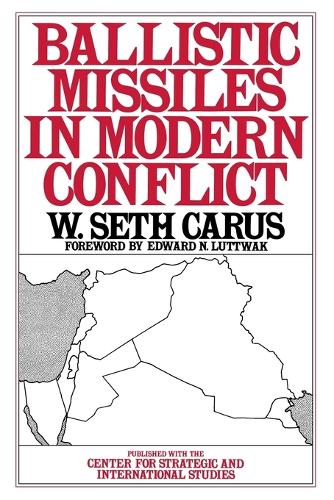
Ballistic Missiles in Modern Conflict
(Paperback)
Publishing Details
Ballistic Missiles in Modern Conflict
By (Author) W. Seth Carus
Bloomsbury Publishing PLC
Praeger Publishers Inc
18th March 1991
United States
Classifications
Tertiary Education
Non Fiction
358.17091724
Physical Properties
Paperback
128
Width 156mm, Height 235mm
170g
Description
Since the vivid images of SCUD missile attacks on Israel and Saudi Arabia were flashed on television screens all over the world, many have wondered how a country like Iraq could acquire and use such long-range ballistic missiles. Although Iran and Iraq had fired these missiles at each other many times during their 1980-88 war, the threat posed by Saddam Hussein's missiles was not fully realized until the SCUDs began raining down on Israel and Saudi Arabia at the start of the 1991 Persian Gulf War. This book, written in co-operation with the Center for Stragetic and International Studies, contains an assessment of the missile threat world-wide. A postscript on the American-Iraqi war and its effects on further ballistic missile proliferation throughout the Third World is also included. Carus presents the facts behind the spread of ballistic missiles and their technology to Third World countries and suggests plausible responses for the United States and its allies. Carus covers all aspects of ballistic missiles - their capabilities and disadvantages, their possible fitting with chemical or nuclear warheads, their attractiveness for Third World leaders, and the responses of Third World countries to missile arsenals in neighboring states. The success of cruise missiles and anti-missile missiles (such as "Patriots") in the Persian Gulf War make these missiles of even greater interest to Third World countries. Carus warns of the dire consequences of ignoring the spread of missiles and their technology to areas of the world where future wars are likely to occur.
Author Bio
W.SETH CARUS is an Olin Fellow at the Naval War College Foundation in Newport, Rhode Island. He is currently preparing several papers on missile proliferation in the Third World.
